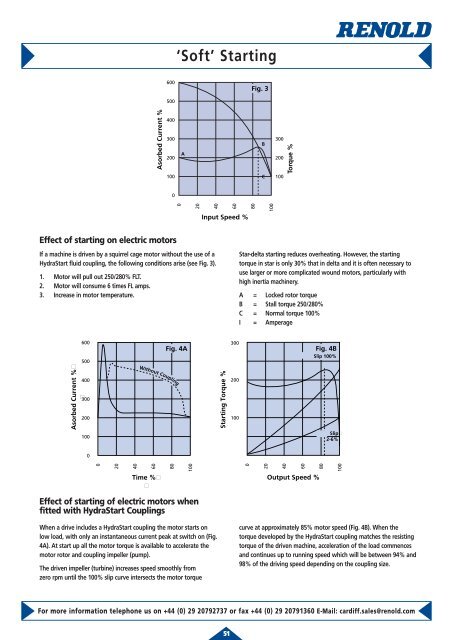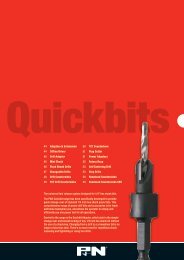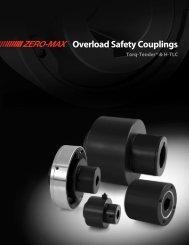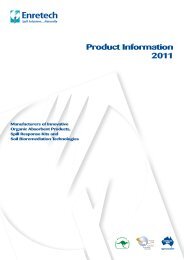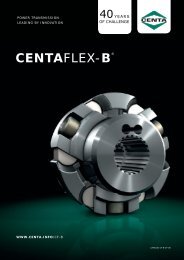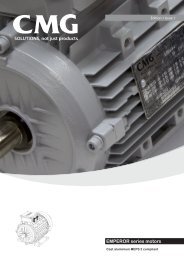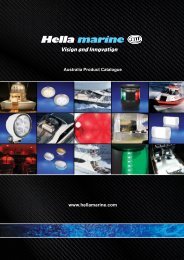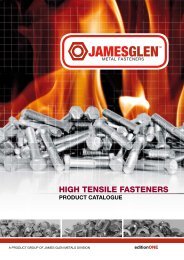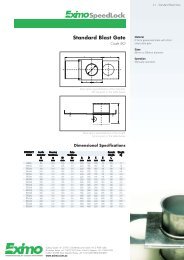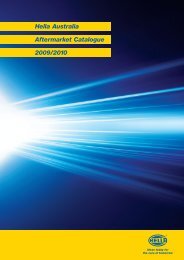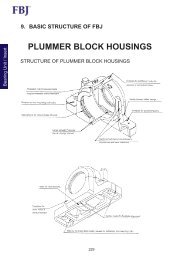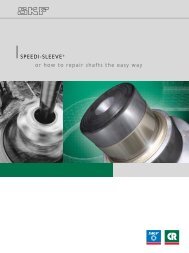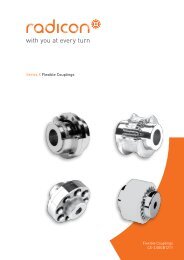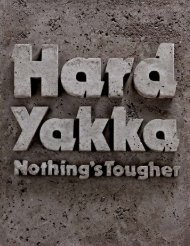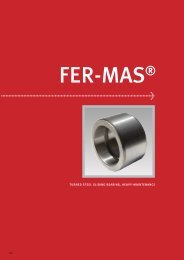Renold Couplings Cat 7th-4 - Industrial and Bearing Supplies
Renold Couplings Cat 7th-4 - Industrial and Bearing Supplies
Renold Couplings Cat 7th-4 - Industrial and Bearing Supplies
You also want an ePaper? Increase the reach of your titles
YUMPU automatically turns print PDFs into web optimized ePapers that Google loves.
Effect of starting on electric motors<br />
If a machine is driven by a squirrel cage motor without the use of a<br />
HydraStart fluid coupling, the following conditions arise (see Fig. 3).<br />
1. Motor will pull out 250/280% FLT.<br />
2. Motor will consume 6 times FL amps.<br />
3. Increase in motor temperature.<br />
Asorbed Current %<br />
600<br />
500<br />
400<br />
300<br />
200<br />
100<br />
0<br />
0<br />
20<br />
When a drive includes a HydraStart coupling the motor starts on<br />
low load, with only an instantaneous current peak at switch on (Fig.<br />
4A). At start up all the motor torque is available to accelerate the<br />
motor rotor <strong>and</strong> coupling impeller (pump).<br />
The driven impeller (turbine) increases speed smoothly from<br />
zero rpm until the 100% slip curve intersects the motor torque<br />
40<br />
Time %<br />
Asorbed Current %<br />
600<br />
500<br />
400<br />
300<br />
200<br />
100<br />
0<br />
‘Soft’ Starting<br />
0<br />
A<br />
Fig. 4A<br />
Without Coupling<br />
Effect of starting of electric motors when<br />
fitted with HydraStart <strong>Couplings</strong><br />
60<br />
80<br />
100<br />
20<br />
40<br />
For more information telephone us on +44 (0) 29 20792737 or fax +44 (0) 29 20791360 E-Mail: cardiff.sales@renold.com<br />
51<br />
60<br />
Input Speed %<br />
Starting Torque %<br />
300<br />
200<br />
100<br />
Fig. 3<br />
80<br />
B<br />
C<br />
100<br />
300<br />
200<br />
100<br />
Torque %<br />
Star-delta starting reduces overheating. However, the starting<br />
torque in star is only 30% that in delta <strong>and</strong> it is often necessary to<br />
use larger or more complicated wound motors, particularly with<br />
high inertia machinery.<br />
A = Locked rotor torque<br />
B = Stall torque 250/280%<br />
C = Normal torque 100%<br />
I = Amperage<br />
0<br />
20<br />
40<br />
60<br />
Output Speed %<br />
Fig. 4B<br />
Slip 100%<br />
80<br />
curve at approximately 85% motor speed (Fig. 4B). When the<br />
torque developed by the HydraStart coupling matches the resisting<br />
torque of the driven machine, acceleration of the load commences<br />
<strong>and</strong> continues up to running speed which will be between 94% <strong>and</strong><br />
98% of the driving speed depending on the coupling size.<br />
Slip<br />
2-6%<br />
100


